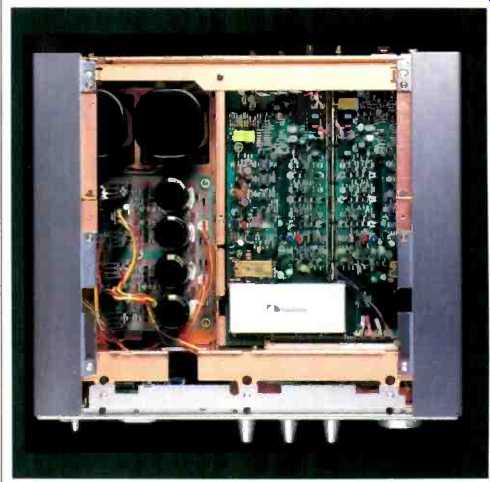
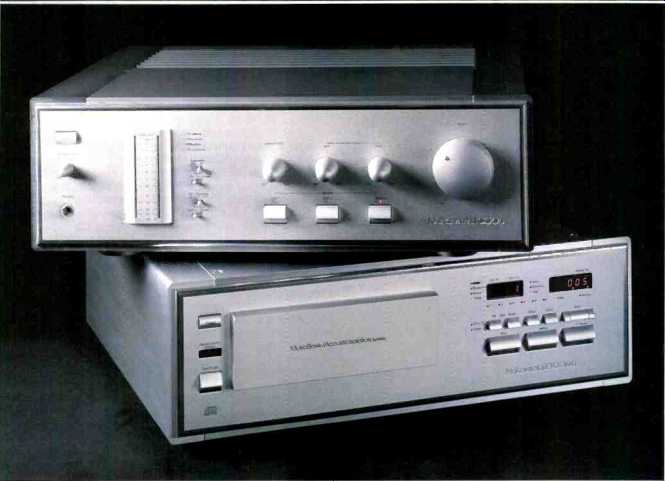
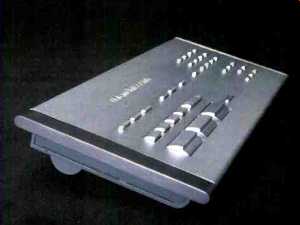
Manufacturer's Specifications
CD Transport
Disc Capacity: Seven.
Digital Outputs: Optical and 75 ohm coaxial.
Power Requirements: 110 to 127 V, 50/60 Hz, 23 watts maximum.
Dimensions:
Transport, 17 1/8 in. W x 5 1/4 in. H x 14 1/8 in. D (43.5 cm x 13.3 cm x 37 cm); remote control, 12 1/16 in. W x 1 3/4 in. H x 4 1/8 in. D (30.7 cm x 4.4 cm x 12.4 cm).
Weight: Transport, 35 1/4 lbs. (16 kg); remote control, 2 lbs. (0.92 kg) including two AA batteries.
D/A Converter
Sampling Frequencies: 48, 44.1, and 32 kHz.
Frequency Response: 0 Hz to 20 kHz, ±0.5 dB, for 44.1-kHz sampling.
S/N: Greater than 106 dB for 44.1-kHz sampling.
Dynamic Range: Greater than 100 dB for 44.1-kHz sampling.
THD: 0.0005% for 44.1-kHz sampling.
THD + N: 0.002%, from 20 Hz to 20 kHz, for 44.1-kHz sampling.
Channel Separation: Greater than 106 dB for 44.1-kHz sampling.
Digital Inputs: Three; switch-selectable optical or 75-ohm coaxial.
Analog Output Levels: Fixed, 2 V; variable, 2 V maximum.
Analog Output Impedances: Unbalanced, 1 kilohm; balanced, 100 ohms.
Headphone Output: 40 ohms, 100 mW maximum.
Power Requirements: 110 to 120 V, 50/60 Hz, 70 watts maximum.
Dimensions: 17 1/8 in. W x 5 1/4 in. H x 14 1/8 in. D (43.5cm x 13.3 cm x 37 cm).
Weight: 38 lbs., 9 oz. (17.5 kg).
General Specifications
Prices: 1000mb transport, $6,000; 1000p processor, $6,000; DA-111p D/A board for earlier 1000p processors, $1,400.
Company Address: 19701 South Vermont Ave., Torrance, Cal. 90502.
Nakamichi, let me state at the outset, does not assign a "1000" model number to its products lightly. The company reserves this designation for components it believes will become standards of comparison within the industry. Their 1000 DAT recording system, which I reported on in the November 1989 issue, consisted of a DAT transport/recorder and a separate digital audio processor. That processor, the 1000p, had both A/D encoding and D/A encoding at the standard digital audio frequencies (32, 44.1, and 48 kHz) plus input and output facilities to handle several digital transports. Now Nakamichi has come up with the 1000mb, a state-of-the-art CD transport and changer to go with the processor, and the DA-111p, an upgrade D/A converter board that plugs right into the original 1000p.
As a component with only digital outputs, the 1000mb CD transport can, of course, be used with any D/A converter.
Several of its features are worth mentioning in some detail.
Nakamichi has developed an acoustic isolation system that takes care of airborne vibration as well as vibrations that occur internally. The unit's main chassis is formed of extruded aluminum encapsulated by a thick external shell to form an extremely rigid structure. This structure is hermetically sealed by filling all joints with a special compound. Another isolating feature is the 9-mm-thick aluminum door which hides the disc tray. The door opens automatically when a disc is ejected, but it must be closed manually to assure an airtight seal.
Thus sealed, the enclosure could become a resonant chamber, reinforcing internal vibrations. Nakamichi addresses this problem by reducing the amount of vibration generated and by isolating it from sensitive components.
To cut down on grinding vibration, the 1000mb uses a brushless, slotless drive motor whose shaft is extra-long and is supported by dual bearings. To prevent vibration from the disc itself (especially if the disc is slightly warped), the transport clamps the CD with a large-diameter stabilizer made of an anti-resonant crystal polymer.
For isolation, the pickup is mounted to the mechanism by a vibration-attenuating base of die-cast zinc, isolated by a rubber bushing. The subchassis that holds the mechanism is then floated off the main chassis by coil springs (cone shaped to prevent lateral displacement) and rubber dampers. The power transformer is also isolated from the mechanism to block potential vibration from that source.
The 1000mb incorporates Nakamichi's MusicBank 6+1 changer system, which requires no separate disc cartridges. A single disc is loaded in the slot, as with any conventional player, but up to six more discs can be loaded--and all seven CDs can be quickly accessed for programmed or random play.
Other features include random play of all discs or a single disc, disc scan, recording synchronization (with compatible Nakamichi analog or digital recorders), a System Remote link to other Nakamichi components, Time Data memory (which stores the track numbers and timings of all seven discs), repeat play, and memory play. Both optical and gold-plated coaxial digital outputs are provided. The rather large, full-function wireless remote control (similar in size and appearance to the 1000 DAT recorder's) handles all operating functions of the transport. Rather surprisingly, however, neither the front panel nor the remote offers access to index points on discs containing index coding.
I'm not going to go into a great deal of detail about the 1000p digital processor since its functions, inputs, and outputs are identical to those of the unit described in my report on the Nakamichi 1000 DAT recorder. What is new is the DA-111p upgrade board developed as a replacement for the processor's original D/A converter, the DA-101p. Like the earlier board, the DA-111p uses Nakamichi's calibration-ROM, 20-bit D/A conversion technique, which the company feels is superior to the recently popularized one-bit noise-shaping designs. In the Nakamichi system, D/A conversion errors are compensated with the aid of read-only memory (ROM) chips preprogrammed with error data for the individual D/A converter chips used. The outputs of the main signal converter and the compensation converter are digitally summed. Music's information density being as high as it is, this computation must be performed at extremely high speed, which required approximately 30 ICs in the digital summation stage of the original D/A board! This created difficulties with "real estate" and power consumption, and risked generating excessive digital noise. Nakamichi solved this problem in the DA-111p by using a new programmable LSI chip to replace the 30-odd ICs. This design, intended to eliminate the digital noise at its source, also reduced by a factor of four the area occupied by the digital circuitry. The extra space is used for an analog output stage of discrete components rather than IC op-amps.
Control Layout
On the 1000mb's front panel, the "Power" pushbutton and "Eject/Load" button are to the left of the disc door. A two section display to the right shows disc number and track in one window and time and memory number in the other. The displays are static matrix types, which are non-pulsating and do not generate switching noise. A row of five buttons beneath the displays handles disc selection, forward and reverse track skipping, and storing of multiple discs. Three larger buttons below these are for "Stop," "Play," and "Pause."
All additional user functions are handled via the remote control, including programming, direct track access, random and repeat play, disc scanning, and direct selection of disc numbers when in the multiple-disc mode. A "Time/T. Edit" button, when pressed successively, alters the display from elapsed disc time to remaining playing time, total number of tracks and playing time, and elapsed track time.
Another button on the remote, "Time Data," calls up a display of the number of tracks and total playing time of each of the discs loaded in the player. This display operates only when the transport is in "Stop" mode. The Time Edit function can be set to play only those tracks that will fit a given tape length. It also works in conjunction with the Synchro Recording feature when the transport's "Sync. Rec" jack is linked with that on a Nakamichi analog or digital tape deck. This jack, the "System Remote" jack, and the coaxial and optical digital outputs are on the rear panel.
The front panel of the Nakamichi 1000p digital processor remains as it was when I tested it as part of Nakamichi's 1000 DAT recording system. One or two DAT recorders plus the new CD transport can be hooked up to this processor, which sports peak-level meters with switchable peak hold, a headphone jack and its level control, an "Output Level" control, an "Analog/Digital" input selector, and buttons for selecting which input you want to monitor. While there are other controls on the panel, they relate to recording with a connected DAT recorder/transport rather than to the processor's use as a D/A converter. Optical and coaxial inputs and outputs for two DAT transports, plus optical and coaxial inputs for a CD transport, are mounted directly on the rear panel of the processor. One pair each of balanced and unbalanced inputs are on the A/D converter board, and the D/A board carries fixed- and variable-level unbalanced outputs plus balanced outputs that are switchable for fixed or variable operation. There is also a pair of unswitched a.c. outlets on the rear panel, one of which can be used for the power cord of the 1000mb CD transport.
Measurements
Most of my tests of this two-component system were the same ones I would have conducted with a one-piece player.
In my first measurements, I was unable to detect any difference between the system's performance with a coaxial cable and with an optical link; I elected to use the optical hookup for the remaining tests. Figure 1 shows the combination's frequency response, using the swept-frequency track of my CBS CD-1 test disc. Channel imbalance amounts to no more than 0.2 dB, and response at 20 kHz is down a bit more than 0.3 dB. Figure 2 shows how THD + N varied with frequency, for a signal recorded at maximum level. This is the first CD player I've ever tested whose THD + N, rather than rising at higher treble frequencies, actually diminished somewhat! Over most of the frequency spectrum, THD + N at 0 dB is approximately 0.002%, with little difference between left and right channels. At all but the highest recorded levels, the reading for THD + N at 1 kHz proves to be even lower, about 0.0018% (-95 dB), as shown by the plot in Fig. 3.
Figure 4 shows what the output looked like when I played signals recorded at -90 dB. In the lower curve, the signals were undithered, and while the noise floor hovers around the 130 dB level, harmonic and other spurious components are visible at many frequencies. Using dithered signals at the same low level, the overall noise floor rises somewhat (to around-120 or-125 dB), but the only trace of a true distortion component is the third harmonic, 3 kHz, which is 115 dB below maximum recorded level and hardly worth worrying about.
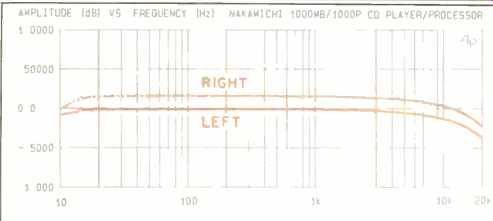
Fig. 1--Combined frequency response of transport and processor.

Fig. 2--THD + N vs. frequency at 0-dB recorded level.

Fig. 3--THD + N vs. recorded level for 1-kHz signal.
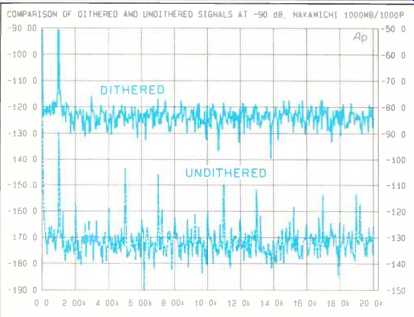
Fig.
4-Spectrum analysis of 1-kHz signals at -90 dB recorded level. Use left-hand
scale for dithered signals, right-hand scale for undithered signals.
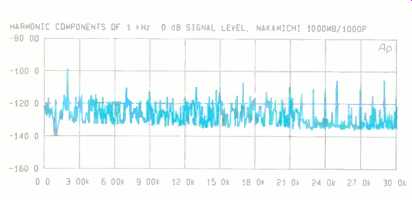
Fig. 5--Spectrum analysis of harmonics from 1-kHz signal at maximum recorded
level.
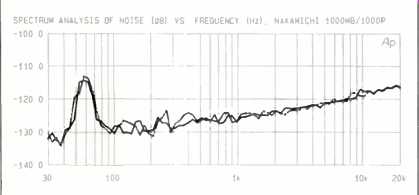
Fig. 6--Spectrum analysis of residual noise when playing "no-signal" track
of CD-1 test disc; left channel is solid curve, right channel is dashed.
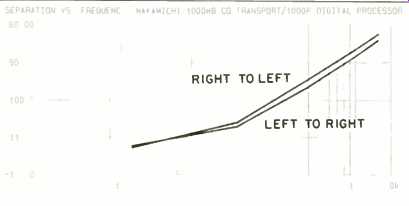
Fig. 7--Separation vs. frequency.
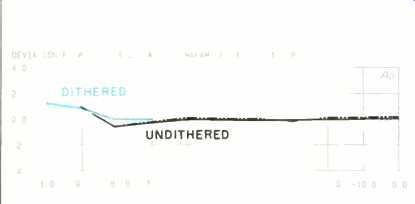
Fig. 8--Deviation from perfect linearity.
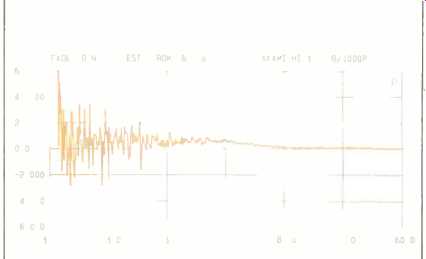
Fig. 9--Fade-to-noise test for dithered signal.
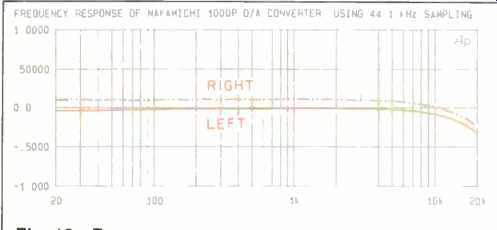
Fig. 10--Frequency response of 1000p processor with DA-111p D/A converter
board, using optical digital input from test generator.
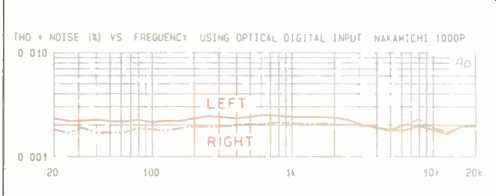
Fig. 11--THD + N vs. frequency, 1000p processor with DA-111p.
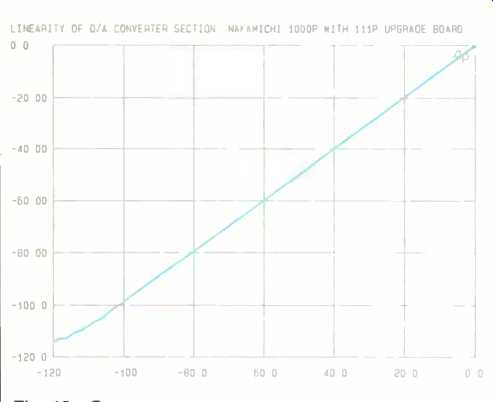
Fig. 12--Output vs. linearity at 500 Hz of 1000p processor with DA-111p;
see text.
To separate the actual harmonic distortion from any residual noise for high-level (0-dB) signals, I ran a spectrum analysis sweep up to 30 kHz for a 1-kHz test signal (Fig. 5). The only significant in-band distortion component is at 2 kHz (the second harmonic of the 1-kHz test signal). It is more than 98 dB below maximum recorded level, corresponding to an actual harmonic distortion figure of 0.00126%. Signal-to-noise ratio for the combination of components measured 108 dB for the left channel and 107.9 dB for the right channel. A spectrum analysis of the noise content, using a third-octave bandwidth filter (Fig. 6), reveals that even the power-supply hum component, at 60 Hz, is at least 113 dB below maximum recorded level. Separation at 1 kHz is nearly 107 dB from the left channel to the right and nearly 106 dB from the right channel to the left. At 16 kHz, separation is still 82.5 and 84 dB for the left-to-right and right-to-left directions, respectively (Fig. 7). Linearity is excellent, deviation from perfect linearity is negligible from 0 dB down to 80 dB below maximum recorded level, and deviation is just over 1 dB at -90 dB (Fig. 8). In order to explore behavior for even lower level signals, I used dithered signals from 70 to -100 dB, and deviation from perfect linearity is no more than 1.5 dB for either channel, as shown. Finally, I conducted the usual fade-to noise test for a further evaluation of the linearity of this CD player combination. These results (Fig. 9) also enable me to derive the EIA dynamic range of the system, which was approximately 105 dB. Using the EIAJ method for calculating dynamic range, I came up with 99.3 dB for the left channel and 99.7 dB for the right, marginally short of the 100 dB claimed by the manufacturer. Frequency accuracy of the system was within 0.0049%, so even musicians or others endowed with perfect pitch would not be likely to detect any deviation from perfect pitch when listening to CDs played on this combination.
Since I was dealing with this combination as a CD player, I saw no reason to explore the A/D capabilities of the digital processor, particularly since those capabilities were covered in my earlier report on the Nakamichi 1000 DAT recorder system. Furthermore, the A/D section of the 1000p processor has not been changed; only the D/A circuitry has been upgraded since the introduction of that component in 1989. I did feel it would be interesting to check out the D/A converter section's frequency response, distortion, and linearity to see if the CD transport contributed anything but perfect transfer of digital data to the system.
Figure 10, therefore, is a plot of frequency response obtained when the D/A converter was fed digital signals generated by my Audio Precision system rather than by a test CD. If you compare these results with those in Fig. 1, you'll see that they are virtually the same. By the same token, if you compare Fig. 2 with Fig. 11, you will see that the plots of THD + N versus frequency are virtually the same; even the slight difference between the channels' performance remains the same for both. As for linearity, it is hard to compare the results shown in Fig. 8 (deviation from perfect linearity) with those in Fig. 12 (output versus input), because my test system is not yet programmed to plot this test the same way for CD and self-generated signals. In Fig. 12's plot of equivalent digital input versus analog output, both in dB, perfect linearity would be indicated by a perfectly straight diagonal line. In fact, the line is almost perfectly straight down to -100 dB, at which point the deviation measures only 0.79 and 0.91 dB for the left and right channels, respectively; this is better than the results from CD. Below -100 dB, you can see some deviation as the output becomes buried in the noise floor. I should mention that for Figs. 10, 11, and 12, the sampling rate for the digital signals produced by the test equipment was 44.1 kHz, the standard sampling rate for CDs.
When I compared the DA-111p D/A converter to the board that it replaced, I found that audible improvements were hardly discernible but did note some measurable improvement. For example, in Fig. 11, THD + N remains virtually constant, even at high frequencies, whereas in the earlier version (Fig. 4A, November 1989), THD + N rose at the treble end. The new board's linearity was also just a shade better than the earlier converter's. Surprisingly, however, though S/N was excellent and met the published claim for the new upgrade, it was somewhat short of the 113.4 and 114 dB measured for the earlier version.
Use and Listening Tests
To show off the avowed benefits of this, the most expensive CD player I had ever tested and auditioned, I chose a recording of Howard Hanson's Symphony No. 4 (Delos DE 3105), with Gerard Schwarz leading the Seattle Symphony. (I have always respected the engineering work of my good friend John Eargle, who oversees all Delos recordings.) The sound was as good as I've heard from any CD player of late, but therein lies the problem. If there was a minute improvement in musicality over the better CD players I've heard in recent times, was that improvement worth the additional several thousand dollars that you would have to pay for the Nakamichi 1000 combination?
In trying to answer that tough question about the Law of Diminishing Returns as Applied to Hi-Fi, I reminded myself that, after all, the 1000p digital processor, at a suggested price of $6,000, has several additional applications, including use as the heart of a DAT recording system and potential future use as a decoder of digital broadcasts by satellite, if and when such service arrives in this country. (Forget about using it for whatever non-satellite digital audio broadcast system this country elects to use-that system is almost surely going to use severe data reduction or compression to reduce spectrum requirements.) Still, this leaves another $6,000 for what is certainly a superbly designed CD transport, albeit one that, for all its high price, cannot directly access an index point on a CD. As usual, during my listening tests I used the pair of Pierre Verany "defects" discs to check out error-correction and tracking ability of CD players. I agree with everything Nakamichi claims concerning the transport's resistance to external vibration. You can just about bang on any surface of this player with a clenched fist without dislodging the optical pickup assembly from its "appointed track" on a CD. However, when I played the test tracks containing data gaps of increasing lengths, the unit began to exhibit one audible glitch per revolution for a track in which a 1.25-mm length of data had been made opaque on the disc's surface. In the past, I have encountered CD players in which error correction (or interpolation) was maintained even with 2.5 mm or more of data mane unreadable. I don't know whether this limitation applies to the particular sample I tested (it had come all the way from Japan and was a preproduction unit, I suspect) or whether it can be expected on production units.
To be perfectly fair, the CD Standards require only that a data gap 0.2 mm long be corrected, but most modern players (including, of course, this one) do much better. It's just that I would have expected a unit that has been engineered so beautifully in all other respects would be among those with the greatest error-correction and interpolation capabilities.
With all due respect to my friends at Telarc, they have been accused by some of turning out recordings that are a bit too bright at the treble end of the spectrum. I wanted to see if this quality would be present when a recently released CD of Meredith Willson's The Music Man was played on the Nakamichi 1000 CD components. The recording (Telarc CD-80276) contains the entire score of the musical, with Erich Kunzel conducting the Cincinnati Pops Orchestra. It took only the overture to convince me that the bright sound attributed to Telarc discs was still there, but wonder of wonders, it now was not the least bit irritating or harsh! In fact, for this type of musical, with its many vocalists and sound effects, the brightness provides a liveness that closely approximates the sonic experience I enjoyed when I saw The Music Man on Broadway.
On the question of cost versus performance, consider an automotive analogy: While a $10,000 car will certainly get you from here to there, some folks cheerfully spend upwards of $100,000 for a Ferrari or a Lamborghini. Somehow, there's a certain engineering elegance about Nakamichi components that renders price a secondary consideration!
-Leonard Feldman
(Source: Audio magazine, Jan. 1992)
Also see:
Nakamichi OMS-7 Compact Disc Player (Aug. 1985)
= = = =